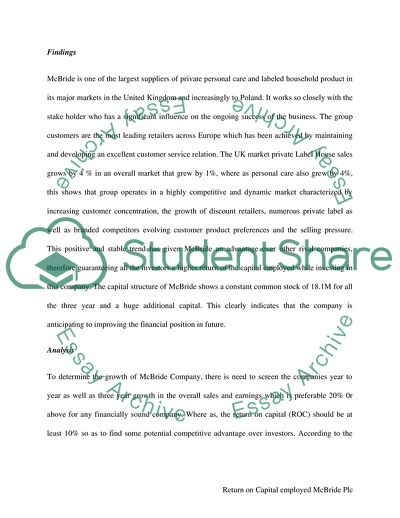Return On Capital employed (McBride plc) Essay Example | Topics and Well Written Essays - 1000 words. https://studentshare.org/finance-accounting/1761983-return-on-capital-employed-mcbride-plc
Return On Capital Employed (McBride Plc) Essay Example | Topics and Well Written Essays - 1000 Words. https://studentshare.org/finance-accounting/1761983-return-on-capital-employed-mcbride-plc.


